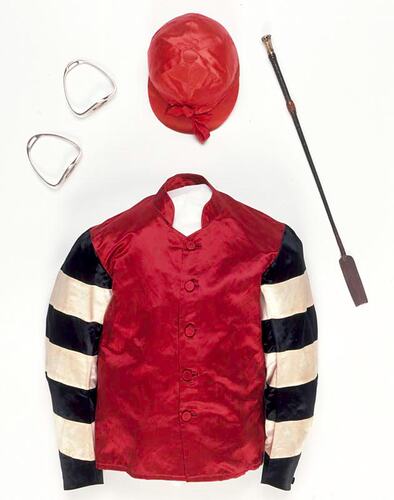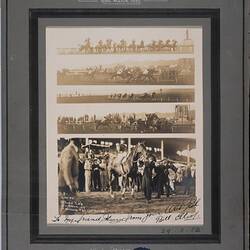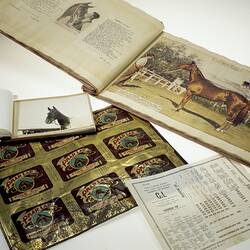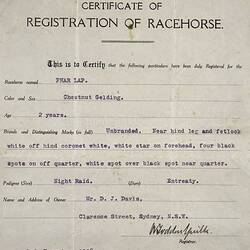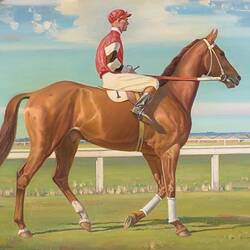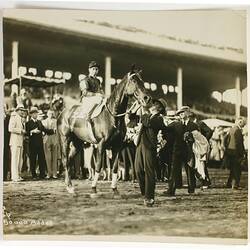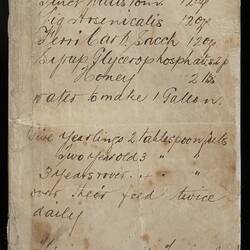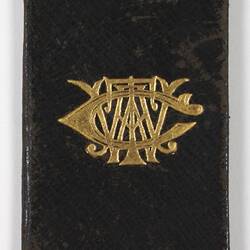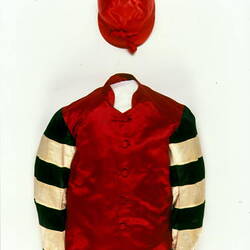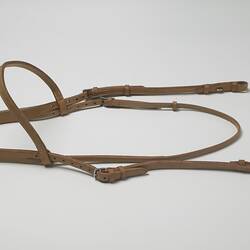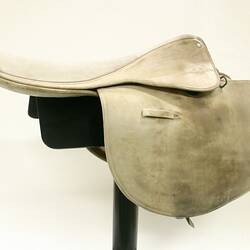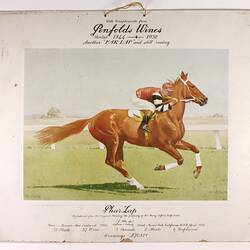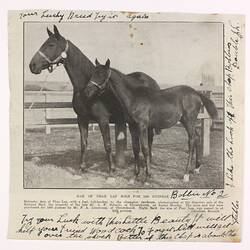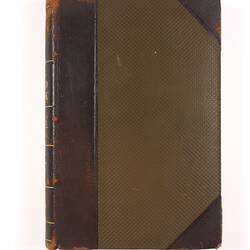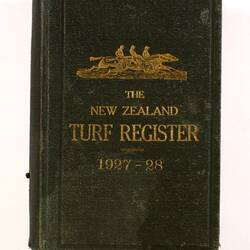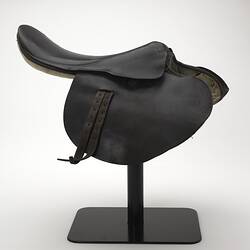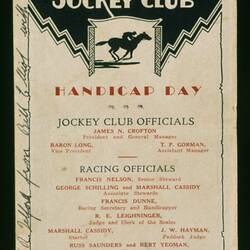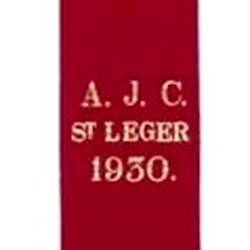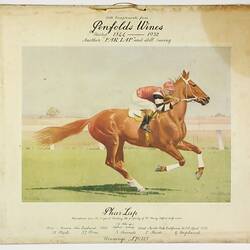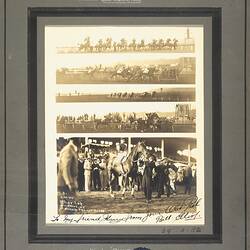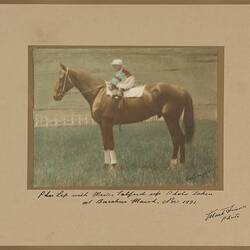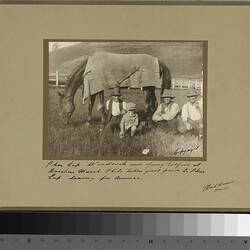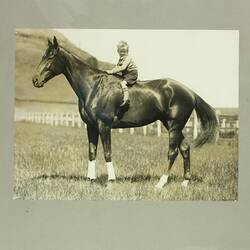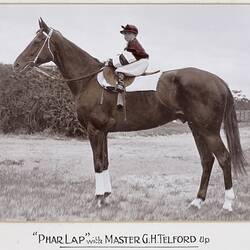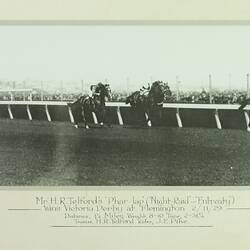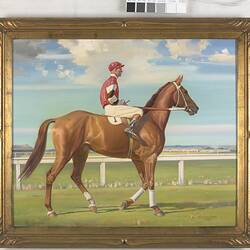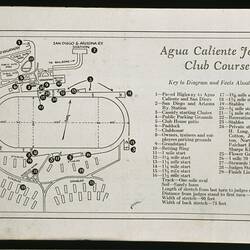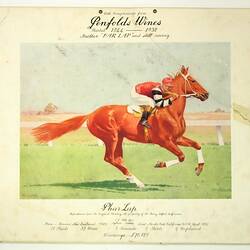Harry Telford had grown up around horses, with his father training them for a living, first in Ballarat, and then near Wellington in New Zealand. Harry found himself fascinated by the pedigree charts of race horses from an early age, and spent countless hours studying them to see if he could discover what made a champion. A career as a horse trainer seemed inevitable, and he later moved to Sydney, establishing himself in business with a small but loyal clientele. By the mid 1920s, and close to fifty years of age, Telford was yet to train that elusive winner that he had dreamed about doing since his days in Ballarat. By now he had a wife and a young son to support, so finding a prospective champion was even more critical.
While studying the catalogue for the 1927 New Zealand yearling sales at Trentham, his fancy was taken by a colt sired by Night Raid and foaled out of Entreaty, a pairing he had a hunch 'might throw something out of the ordinary'. With no funds of his own, Telford tried in vain to convey his enthusiasm to Bob Price, a Sydney bookmaker and others, in the hope that they would help buy his dream colt. It appeared too much of a gamble for them, but eventually he prevailed upon the Sydney businessman, Mr. David J. Davis, for whom he was training several horses. Davis agreed to go to 190 guineas (£199 10s). Harry wrote to his brother Hugh Telford, who was based in New Zealand and had a horse training establishment near Trentham, instructing him to attend the sale and bid up to 190 guineas on the colt if he 'had any sort of head and four legs'. Later Harry became interested in a colt by Tea Tray listed in the same sale that perhaps offered more promise. He sent his brother another letter asking him to give preference to a bid on the second horse instead. Fortunately, Hugh did not receive the second letter until after he returned from the sale, where Lot Number 41 - the Night Raid-Entreaty colt - was knocked down to him for 160 guineas.
Back in Sydney, Harry Telford was thrilled by news of the purchase and the 'bargain' price. That was until he clapped eyes on the horse he had bought sight unseen, as it was unloaded from a shipping crate on the Sydney wharves. The big, gangly beast looked anything but a champion. Warts covered his face and there was an awkwardness about him that did not inspire confidence. Telford's real problems came when Davis saw his purchase. He was furious and wanted nothing further to do with the horse. Telford and Davis struck a deal under which Telford would lease the horse for three years covering all the costs of training, feeding and stabling, and in return would keep two-thirds of the winnings - if there were any.
Telford was pretty well broke and must have had some nerves about the chance he was taking on the colt from New Zealand. To deliver a poor performer risked alienating one of the few clients he had left and could end his career as a trainer. He was still confident that the horse's breeding and size would make him a champion, but it would take over 12 months of hard work. He had the horse gelded so it could concentrate better on one thing only: running fast.
Three months after the horse was registered under the name Phar Lap in December 1928, Telford entered him in his first race at Rosehill. Phar Lap ran last. It would take another three months and four more starts before Phar Lap won his first race on 27 April 1929 in the Maiden Juvenile Handicap - Maiden because none of the other entrants had won a race either.
After a spell and more hard work, Phar Lap finally began to show some form as a three-year-old. His performance to run second in the Chelmsford Stakes at Randwick on 14 September 1929 saw the racing public take note and when he won the AJC Derby by a convincing three and a half lengths, a week later, there was a real sense that Phar Lap had 'arrived'. Over the next 12 months Phar Lap was to change Telford's fortunes. The battler's address changed to 'easy street' as his horse piled victory upon victory.
By 1930 Telford owned many race horses. He bought the property Braeside at Mentone, Victoria, and upgraded it into a horse training facility at great cost. Commitments at Braeside prevented Telford from accompanying Phar Lap on the fateful excursion to America. He trained very few winners after Phar Lap's death and eventually had to give up Braeside. In 1938, Telford had success with the two-year-old colt Aurania, winning the Maribyrnong Plate at Flemington in convincing Phar Lap style. The horse was bred by Telford from the mare Rondalina - a former stable mate of Phar Lap's - and the famous English sire Manitoba. When Silver Hawk won the Balwyn Handicap at Caulfield in 1953, it was reported in the press as Harry Telford's first win in Melbourne for 14 years.
Telford retired from racing in 1957 and died in 1960.
Related Resources:
Phar Lap - the Story of Australia's Wonder Horse
Phar Lap Infosheet
References:
Reason, Michael, 2005, Phar Lap: A True Legend, Museum Victoria, Melbourne (revised edition 2009).
The Mercury (Hobart), 30 Sep 1936, p.11, 'Phar Lap Memories, How Ugly Duckling Was Bought as Yearling' http://nla.gov.au/nla.news-article30114001.
Western Mail (Perth), 10 Nov 1938, p.16, 'Memories of Phar Lap' http://nla.gov.au/nla.news-article37855919.
The Sunday Herald (Sydney), 29 Mar 1953, p.2, 'Phar Lap's Trainer Wins After 14 Years' http://nla.gov.au/nla.news-article18503439
More Information
-
Keywords
-
Authors
Mr Eddie Butler-Bowdon, Mr Michael Reason, Matthew Churchward
-
Article types
